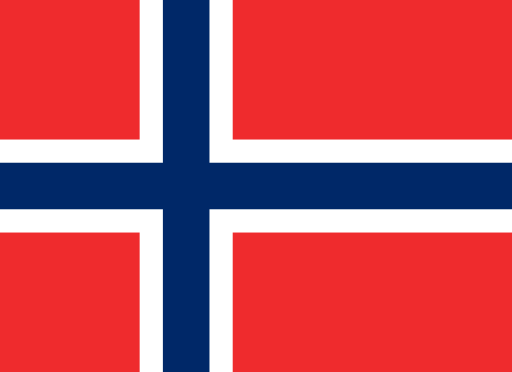|
|
 |
Articles
|
|
A Fun First Day
|
|
|
Sam Morishima
http://www.new-dating.com/search.php
|
Preparing for a Fun First Day on the Snow
Are you ready for the snow? Here are some tips for a fun first day.
Be and stay healthy: Why? For two good reasons: Skiing and snowboarding can be strenuous and second, the altitude and weather can get to you.
Skiing and snowboarding are acute balance sports requiring specialized movements. The best approach is to develop good core balance and to learn to ski and board efficiently. Using more feet and ankle muscles with body positioning rather than twisting and pumping your body will result in smoother skiing and boarding and less expenditure of energy. This will minimize the use of large muscle groups that cause you to muscle your way through skiing and snowboarding. By balancing better and using feet and ankle movement will allow you to ride the skis and boards almost effortlessly. You can improve your balance at home by just balancing on one leg and trying to relax your feet and ankles.
Once you establish a good sense of balance then building stamina in your muscles with such exercises as hopping over a stack of books or squatting puts the final touches to getting your ski and snowboard body ready.
To help you acclimatize to the altitude with its less dense air you need to be rested up. Get a good nights rest prior to heading up the mountains. Once in the mountains begin your sport activity slowly remember your body is trying to adapt to the lack of oxygen. Because of the oxygen starvation occurring your heart is already compensating by pumping harder and faster. On the tissue level your cells are trying to adapt by increasing their respiration activity and fluid loss is increased. So drink plenty of water and take antioxidants like vitamin C rich foods. Antioxidant vitamin supplement (vitamin C, vitamin E, and lipoic acid) have shown to significantly improved symptoms of altitude sickness. Eating carbohydrates for energy might be a good thing as well minimizing the chance for hypothermia. Things you should avoid are Caffeine, Alcohol, and Nicotine. Such chemicals cause dehydration and vasodilation increasing the loss of heat from your body.
Protect your self with sun block. The sun’s ultraviolet rays are responsible for sunburn reactions with some UV rays (UVB) having a major role in causing skin cancer as well as other UV rays (UVA) going deep into the skin resulting in pre-mature skin aging changes such as wrinkle formation.
Just to let you know the SPF ratings are ratings that apply only to the UVB rays that cause the cancer and not the deep penetrating UVA rays that can cause pre-mature aging.
SPF 15 sunscreen blocks 92% of UVB rays and SPF 30 sunscreen blocks 96% of UVB rays. By the way the effectiveness of the sunscreen depends upon the amount applied to the skin. Most people do not apply enough on therefore cutting down the effectiveness of the SPF 30 to a reality level of SPF 7 to 15. So follow directions on how much to apply to utilize the maximum capability of the sunscreen. If you don’t want to pre-maturely wrinkle like a prune look for a broad-spectrum sunscreen that contains agents that effectively blocks the UVB and UVA rays.
I’ve heard that the broadest protection are sunscreens with SPF 30 or greater with added UVA blockers such as titanium dioxide, zinc oxide, Parsol 1789 Avobenzone) and Mexoryl-Sx. But do some research of your own - don’t just take my word for it.
Hey, if you ever find a sunscreen that is broad-spectrum that has a high SPF rating, doesn’t sting the eyes, stable, water-resistant, is well tolerated, non-toxic, cosmetically nice and inexpensive let us know.
Next, protect your eyes. We spoke of UVB rays - the ones that burn the skin - and they are the ones that can damage the eyes. Combined with cold wind and reflection off the snow, UVB has the potential to cause snow blindness (photokeratitis), a temporary blindness lasting 12 to 48 hours with very painful problems with the cornea of the eye.
Regarding the UVA rays- current research says they are primarily absorbed within the lens of the human eye – but who knows what the future studies will find out. There are discussions though that talk about the possibility that the UVA rays can hurt your central vision, damaging the retina at the back of your eye (macula.)
Most sunglasses should block at least 70% UVB and at least 60% of UVA. However, good sunglasses will block at least 98% of both. Great sunglasses claim to block 100% of the UV rays. These great sunglasses are usually made with polycarbonate, glass or plastic (CR-39). This is why you shell out the big bucks for those great shades. Check the rating on your sunglasses and buy to protect.
This is the end of part one on a three part series on prepping yourself for a fun first day in the snow. Part two will discuss Clothing, helmets and equipment. Part three will discuss getting to the slopes - a checklist for your car.
Preparing for a Fun First Day on the Snow
Part Two Dec 08, 2005
Hope you read part one on exercise, acclimatizing to the altitude with proper nutrition and hydration, protecting your skin and eyes. If not then grab the previous issue of SSN and catch up but for the rest who did let’s move forward with Clothing, helmets and accessories.
You want to dress for success on the hill. May it be battling the weather or trying to attract a significant other as well as that most important reason so you can perform your best.
When selecting what to wear, think functional. Your garments should be durable, fit well to allow freedom of movement, keep you warm and dry.
Dress in layers. In the mountains, be prepared for changeable and extreme weather. Wear layers of clothing, rather than one thick item. You can always take a layer off if you get warm. Think of three key layers.
First layer (Base Layer): his layer will help wick moisture away from your skin and to the outer layers, where it can then evaporate, thus keeping your skin relatively dry. Base layer garments are available in various weights to match activity level. Lightweight layers when it's warm or when you are really working up a sweat; medium or expedition weights when it's really cold or when you aren't exerting yourself, and thus generating little body heat. Wet garments that are in contact with your skin conduct 25 times more heat away from the body than dry ones. Avoid cotton- it absorbs many times its weight in water and loses its insulating qualities when wet.
What works well as a first layer consist of a polypropylene shirt and pants or long thermal underwear made of a synthetic fiber such as polyester that has 'wicking' ability to move moisture away from your body.
Second layer or Middle layer trap warm air next to the body. The thicker the layer of trapped air, the warmer you'll be. Two or three light weight layers are preferable to a single heavyweight one, because you can adjust the amount of insulation you're wearing to your activity level and to fluctuating temperatures.
A good rule of thumb is: shed a layer before you get too warm and begin to perspire. The same applies when temperatures cools down all you do is add a layer before you begin shivering.
A great second layer is a light - weight wool sweater or fleece pullover and pants. Note: Cotton clothing and blue jeans are poor choices because they won't keep you warm when they get wet.
Third or top or outer layer is your protection from the elements, minimizing heat loss from wind and cold. Remember that even a gentle breeze can suck warm air from your body through the process of convection. Regarding the top layer look for a waterproof, breathable outer shell that lets perspiration escape while protecting you from wind, snow, and rain. A good outer layer should consist of a water-resistant snow pants and a jacket to protect you from snow, sleet, or rain and to block the nasty wind. For a good snowboard jacket look for one that is loose fitting, comfortable, long enough at the back to cover your bottom to keep snow out of your pants, and high enough at the neck to keep out the wind and cold. Pants need to be comfortable and loose fitting. It may be nice to look for a pair with extra padding around the knees and bottom to protect you when you fall.
Key features to look for in clothing.
Check for freedom of movement yet provides warmth and protection. For boarders get a jacket shell with a long cut down to your hips that will keep your midriff warm and dry when fastening bindings, or on deep powder days.
Look for tough, waterproof, breathable shell to stand up to plenty of abrasion and abuse.
I like vents under the arm that help regulate your temperature. Open when hot; close when cold. Storm flaps covering all zippers help keep wind out. Zip-pulls (attached to zippers allow you to open and close the vents without removing your gloves.
Look for double or triple-stitched seams, and reinforced material on the sides of the jacket shell, and knees and rear end of your pants. Remember you now have some investment on you so be careful as you carry your skis and board with their sharp edges that can cut through the stitching and material on the sides of your jacket or pants, or through your gloves.
Let’s move on up to your head. For minimizing heat loss from the head and protecting the little used portion of your body a helmet can be a good thing to have.
We won’t discuss the fancy helmets with on board computer, GPS, tele-communication and entertainment center features but just how to look for a good fitting helmet.
To start with lets determine the size. Wrap a measuring tape around your head just above the eyebrows. This is the helmet size.
Now go to the store and try on the helmet by first aligning the front rim of the helmet above your eyebrow. Then holding the straps on both sides roll the helmet over the back of your head.
The first thing to look for is gaps. Feel the pads press on your head. They should be flush against your forehead and cheeks. Make sure that the back of the helmet does not touch the nape of your neck.
Fasten the chin strap making sure it is snug and feels comfortable. Then try to roll your helmet off your head. A good fitting helmet will make your forehead skin move as you try to roll the helmet.
You’re not finished yet. Make sure your goggles or if you are going to wear glasses that they fit well with your helmet. Also, do you listen to music then check the use of ear phones on it. Does your ears get cold make sure that the ear covering on the helmets cover and fit well.
Not all helmets are built the same. Some work with Charlie Brown’s head others fit better on Jug Head’s. So try various ones. Once you know the helmet fits well then go for the colors, design, venting features, communication capabilities and such.
Other Important Clothing Items
Sunglasses or goggles to protect your eyes from harmful solar radiation, the wind, and to keep ice pellets or snow from stinging your eyes. Remember bright sunlight reflecting off the snow can be just as bad as direct sunlight. Select goggles that allow for appropriate range of peripheral vision. Look for wide-angle frames or sport shields. Sunglasses and goggles also come in specific tints to help you see dips and bumps in the snow on a dull day. Here is a general rule regarding lens color tint and applications.
First polarized lens are great for reducing glare and can come in various tints: Polarized Gray is suitable for all light conditions especially bright sunlight and offer a 10 % VLT (Visual light transmittance).
Polarized Brown best in moderate light allowing increase contrast, improve depth perception and offer a 12 % VLT.
Polarized Green best in moderate to bright sunlight offering 16% VLT.
Polarized Rose best for moderate to hazy light providing the sharpest contrast and offering 19% VLT
Looking at the non-polarized lens lets start off with the:
Clear lens- suitable for very low to no light conditions which is usually a Clear Crystal Carbonate lenses that are great to protect your eyes from rain and bugs and at night time offering 98% VLT (VISUAL LIGHT TRANSMITTANCE)
Yellow lens- suitable for all “low-light” conditions such as cloudy, overcast, dusk & dawn. Low-light lenses increase contrast and visual acuity and is a yellow crystal carbonate offering a 80% VLT (VISUAL LIGHT TRANSMITTANCE)
Orange lens- suitable for all “medium light” conditions such as partly sunny, cloudy, and overcast conditions. Low-light lenses increase contrast and visual acuity and is a orange crystal carbonate offering a 57% VLT (VISUAL LIGHT TRANSMITTANCE)
Lets now examine heat loss through the head. You can lose a tremendous amount of body heat through your head: cover it, and your feet and hands will be warmer.
Hat or Cap for warmth (although it won't provide protection). Make sure that the hat or cap can cover your ears. Some jackets have a useful hood tucked into the collar.
Wear a helmet to protect your head and for warmth.
Fleece neck gaiter or facemask to protect your face when it's really cold.
Wrist guards for snowboarders to prevent wrist injuries.
Gloves or mittens made of waterproof but breathable fabrics. Snowboarding gloves and mittens often have a reinforced palm and fingers to stand up to the wear caused by balancing on the snow. Some also have built in wrist guards. Long , elasticized wrist or strapping on cuffs to keep out snow is a good idea.
Socks with flat seams and stretchy material that doesn't wrinkle against your skin will minimize sharp pressure points against the foot. A thin liner socks (synthetic socks) covered by a thicker wool or pile socks or snowboard/ski socks works especially well. Avoid extremely bulky socks that can keep you from feeling connected to the ground, which is necessary for good control.
Sunscreen should always be used to protect you from sunburn and chapping in cold winds. A lip balm will prevent your lips from cracking.
|
Sam Morishima
http://www.new-dating.com/search.php
|
|
|






